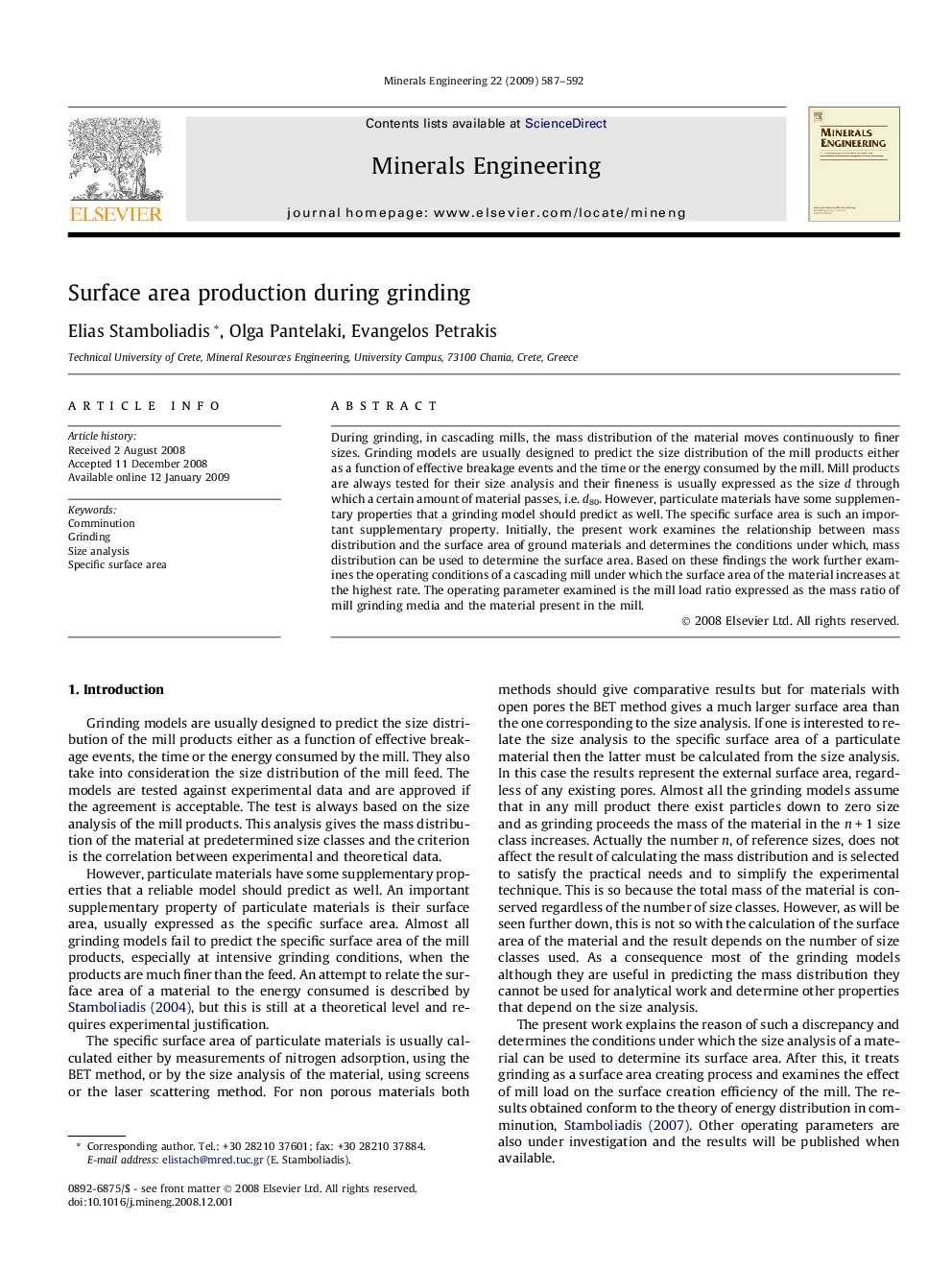| Article ID | Journal | Published Year | Pages | File Type |
|---|---|---|---|---|
| 234205 | Minerals Engineering | 2009 | 6 Pages |
During grinding, in cascading mills, the mass distribution of the material moves continuously to finer sizes. Grinding models are usually designed to predict the size distribution of the mill products either as a function of effective breakage events and the time or the energy consumed by the mill. Mill products are always tested for their size analysis and their fineness is usually expressed as the size d through which a certain amount of material passes, i.e. d80. However, particulate materials have some supplementary properties that a grinding model should predict as well. The specific surface area is such an important supplementary property. Initially, the present work examines the relationship between mass distribution and the surface area of ground materials and determines the conditions under which, mass distribution can be used to determine the surface area. Based on these findings the work further examines the operating conditions of a cascading mill under which the surface area of the material increases at the highest rate. The operating parameter examined is the mill load ratio expressed as the mass ratio of mill grinding media and the material present in the mill.
